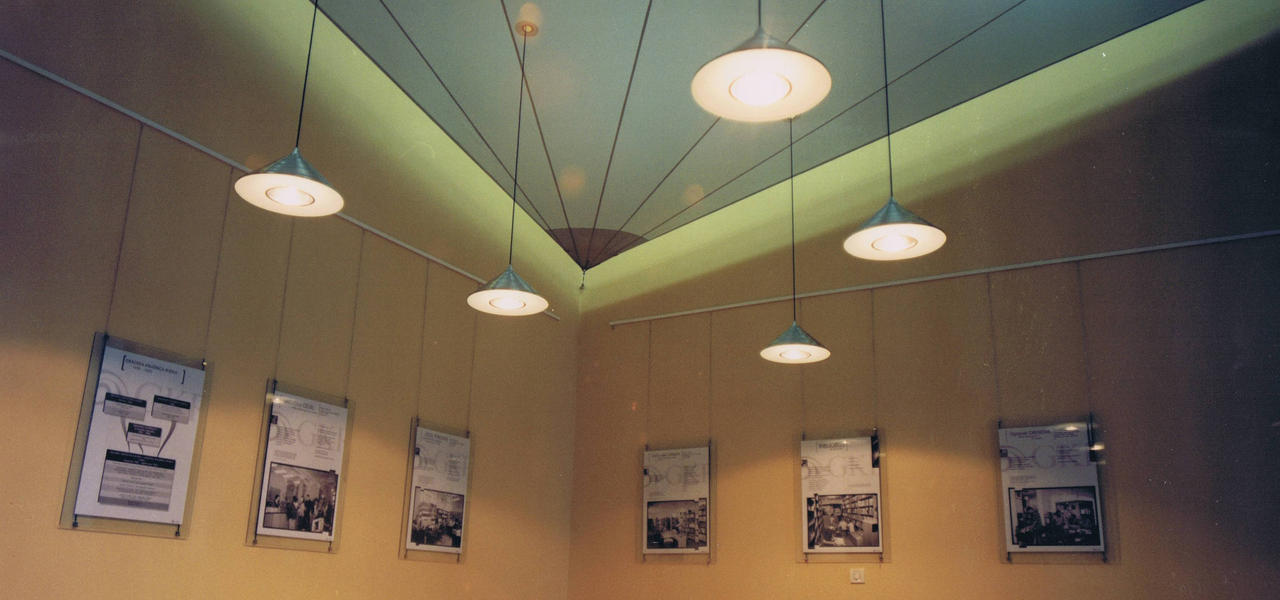
National Reading Room
Status:
Implemented project
Year of designing:
1998.
Year of implementation:
2000.
Program:
Interior, Public, Culture, Education
Location:
Korzo,
show location on map
Spatial scope
interior 180.00 m2
Value of investment:
150,000.00 €
Investori:
Grad Rijeka, Ministry of culture
Author:
Arhitektonsko-građevinski atelje d.o.o.
Project team:
Marin Franolić, Silvano Mrak, Vladi Bralić
Additional projects:
Termotehničke instalacije: Željko Gredelj
Elektrotehničke instalacije: Mladen Kršul, Teo Prološčić
The spaces of the Reading Room are located on the first floor of the memorial building dating from the era of historicism (by the architect A. Deseppi, beginning of the 19th century), located in the very centre of the city, between the main city promenade Korzo and the nearby Trg Riječke Rezolucije (Rijeka Resolution Square).
The Illyrian National Reading Room was founded in Rijeka in 1849 and has since then been kept as a public institution continuing its educational and informative activity. The National Reading Room inhabited these rooms in 1890 and after WWII it became the Reading Section of the Rijeka City Library.
Primarily, because of a speedy development of today’s information media, and also, because of the neglected reading spaces on Rijeka’s main promenade (Korzo), The Ministry of Culture and City of Rijeka have decided upon a renovation project.
The basic conception of the project is based on choosing a new interior solution directed towards a functional, intimate and focused reading of newspapers, magazines and other print, also in the current, digital versions. The interior solutions have therefore been chosen according to the preservance of this historical building.
Esthetically connecting smaller areas (reading salons, representation hall, the archive etc.) into one functional unity is achieved through the choice of reduced shapes, materials and colors causing the elements listed to arythmically align through the entire area.
A specific feature in shaping comes from the use of a geometric spatial surface, a hyperbolic paraboloid made from a tight sailing canvas. This enables a new look of the ceiling in the reading spaces simultaneously adding to the basic conceptual demands: intimate character and concentrating readers.
Other projects from the category Culture:
- Astronomy Centre
- The Rijeka Synagogue
- Memorial crane
- A Light Sign for Rijeka
- Placement of the Sculpture by V. Radoičić
- Zrinski Castle - an Exhibition
- Apage Satanas!
- A Suggestion for Building a Romolo Venucci Gallery
- Julije Klović Croata - a Memorial Collection
- Krčki Tanac – A Memorial for the Victims and the Fighters of the National Liberation War
- Exhibiting a Sculpture of N. Bilić
- Crystal Cube of Serenity for Tin Ujević
- Memorial center Karlota in Raša
- Interpretacijski centar Ronjgi



